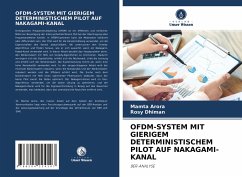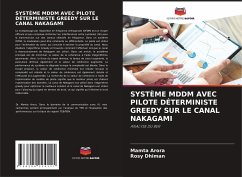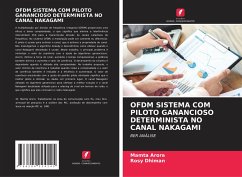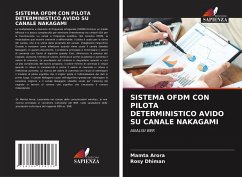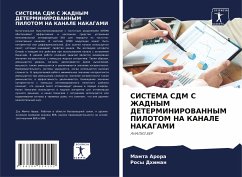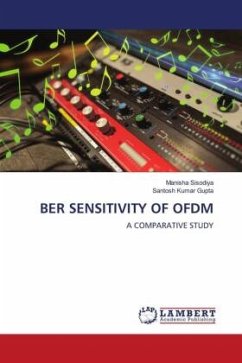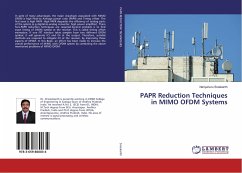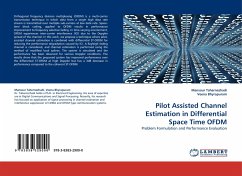
OFDM SYSTEM WITH GREEDY DETERMINISTIC PILOT ON NAKAGAMI CHANNEL
BER ANALYSIS
Versandkostenfrei!
Versandfertig in 6-10 Tagen
27,99 €
inkl. MwSt.

PAYBACK Punkte
14 °P sammeln!
Orthogonal frequency division multiplexing (OFDM) provide an effective and low complexity means it eliminate the inter-symbol-interference (ISI) for transmission over frequency selective channels. In OFDM system, modulation may be coherent or differential. Pilot is used for channel estimation, which is estimate the property of channel. We investigate the Greedy algorithm and find how to effect when Nakagami faded channel is used. In this paper, the main problem is minimizing the coherence value with the help of greedy algorithms. Thus, decreases the signal strength, increase the computational ...
Orthogonal frequency division multiplexing (OFDM) provide an effective and low complexity means it eliminate the inter-symbol-interference (ISI) for transmission over frequency selective channels. In OFDM system, modulation may be coherent or differential. Pilot is used for channel estimation, which is estimate the property of channel. We investigate the Greedy algorithm and find how to effect when Nakagami faded channel is used. In this paper, the main problem is minimizing the coherence value with the help of greedy algorithms. Thus, decreases the signal strength, increase the computational time, power also decreases and increases the coherence value. The system performance is degrading when high complexity is used. In proposed work, minimum coherence value is reduce when reduces the complexity and coherence value also reduce and efficiency is increased. The coherent value finding with the help of optimize pilot pattern means the best pilot is optimize data firstly. The Nakagami channel used in greedy algorithm to optimize the best solution and Nakagami faded channel used for signal aliasing in term of noise which means they remove the unwanted noise.



